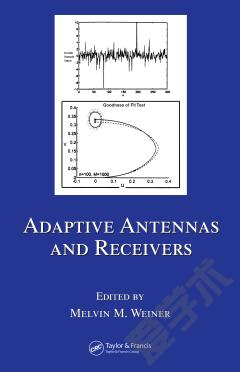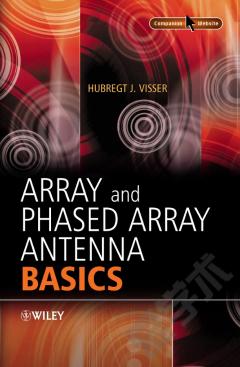Introduction to Antenna Placement and Installation
About the Author. Preface. Series Preface. 1 Basic Antenna and Propagation Theory. 1.1 Introduction. 1.2 Characteristics of Electromagnetic Waves. 1.3 Interaction between Two Waves. 1.4 Polarization. 1.5 Characteristics of an Antenna. 1.6 Propagation. References. 2 Aircraft Systems Using Antennas. 2.1 Aircraft Systems. 2.2 Frequencies of the Most Common Aircraft Systems. 2.3 Automatic Direction Finding. 2.4 Distress/SOS. 2.5 Distance Measuring Equipment. 2.6 Electronic Counter Measures. 2.7 Electronic Support Systems. 2.8 Emergency Locator Transmitter/Emergency Position IndicatingRadio Beacon. 2.9 Global Positioning System. 2.10 HF. 2.11 Instrument Landing System. 2.12 In-Flight Telephony. 2.13 Microwave Landing System. 2.14 Radar. 2.15 SatCom Civilian. 2.16 Signals Intelligence. 2.17 Tactical Air Navigation. 2.18 Traffic Collision Avoidance System. 2.19 Telemetry. 2.20 UHF. 2.21 VHF Comms. 2.22 VHF Omnidirectional Ranging. 2.23 Equipment Designation. References. 3 The Antenna Siting Process. 3.1 Introduction. 3.2 New Antenna Layouts. 3.3 Optimum Positions for Blades. 3.4 Design Phase. 3.5 Certification and Qualification Phase. 3.6 Typical Antenna Layouts. References. 4 Frequency and Spatial Coverage Considerations. 4.1 Introduction. 4.2 Effect of the Structure on the Spatial Characteristics ofthe Antenna. 4.3 Combination of Two Waves. 4.4 Measurements on Scaled Test Bodies. 4.5 Effect of Frequency on the Radiation Pattern. 4.6 Effect of Distance from Obstacles. 4.7 Effect of Wings on the Radiation Pattern. 4.8 Effect of the Curved Ground Plane and the ElectricalDimensions of the Fuselage. 4.9 Radiation Patterns on Cylinders in the Absence ofObstacles. References. 5 Antennas Used on Aircraft. 5.1 Introduction. 5.2 Near and Far Fields of an Antenna. 5.3 Antennas on Aerostructures. 5.4 Polar Radiation Patterns. 5.5 Dipoles. 5.6 Monopoles. 5.7 Loops and Notches. 5.8 Helixes. 5.9 Flat/Planar Spirals. 5.10 Patches. 5.11 Aperture Antennas. 5.12 Reflectors. 5.13 Waveguide Fed Antennas. 5.14 Model Numbers Used by Different Manufacturers. References. 6 RF Interoperability. 6.1 Introduction. 6.2 Coupling between Systems on an Aircraft. 6.3 Techniques for Achieving RF Interoperability. 6.4 Modulation. 6.5 Coupling due to Radiated Emissions through the Antennas. 6.6 Coupling between Systems with LOS Antennas. 6.7 Coupling between Systems for Antennas on Opposite Surfacesof the Fuselage. 6.8 Existing Formulas Used for Calculating Coupling between TwoAntennas on Opposite Surfaces. 6.9 Derivation of an Empirical Formula that Correlates with theMeasured Data. References. 7 Computer Modelling Techniques. 7.1 Introduction. 7.2 Overview of Computer Modelling. 7.3 Generic Types of Computer Modelling. 7.4 Method of Moments. 7.5 Finite Difference Time Domain. 7.6 GTD/UTD. 7.7 Physical Optics. 7.8 Hybrid Methods. 7.9 Comparison of Predicted Surface Currents. 7.10 Code-to-code Comparison of Radiation Patterns Predicted onthe Simplistic Airframe. 7.11 Relationship between Number of Unknowns and SurfaceArea. References. 8 Measurements. 8.1 Introduction. 8.2 Positioners. 8.3 Test Facility Antennas. 8.4 Scaled Models. 8.5 Scaled Antennas. 8.6 Absorbers. 8.7 Measurement Facilities. 8.8 Indoor Test Facilities. 8.9 Anechoic Chambers. 8.10 Compact Ranges. 8.11 Near-Field Facilities. 8.12 Outdoor Far-Field Ranges. 8.13 Ground Test Measurements. 8.14 In-Flight Measurements for System and Inter-SystemTesting. References. 9 Reference. 9.1 Centigrade to Fahrenheit Temperature Conversion. 9.2 Conductivity of Common Metals. 9.3 Degrees to Radians and Radians to Degrees. 9.4 Dielectric Constants and Loss Tangents of CommonMaterials. 9.5 Electrochemical Series. 9.6 Electromagnetic Spectrum and Frequency Bands for DifferentNomenclatures. 9.7 Formulas. 9.8 Frequency to Wavelength. 9.9 Gain in dB and Gain as a Linear Ratio. 9.10 Greek Alphabet. 9.11 Imperial to Metric Conversions Distance, Area,Volume, Speed. 9.12 Periodic Table Alphabetically. 9.13 Polarization Matching Matrix. 9.14 Power in dBm and Power in Watts. 9.15 Preferred SI Scientific Prefixes. 9.16 Terms and Definitions. 9.17 VSWR to Return Loss. Appendix: Abbreviations and Acronyms. Index.
{{comment.content}}








 京公网安备 11010802027623号
京公网安备 11010802027623号